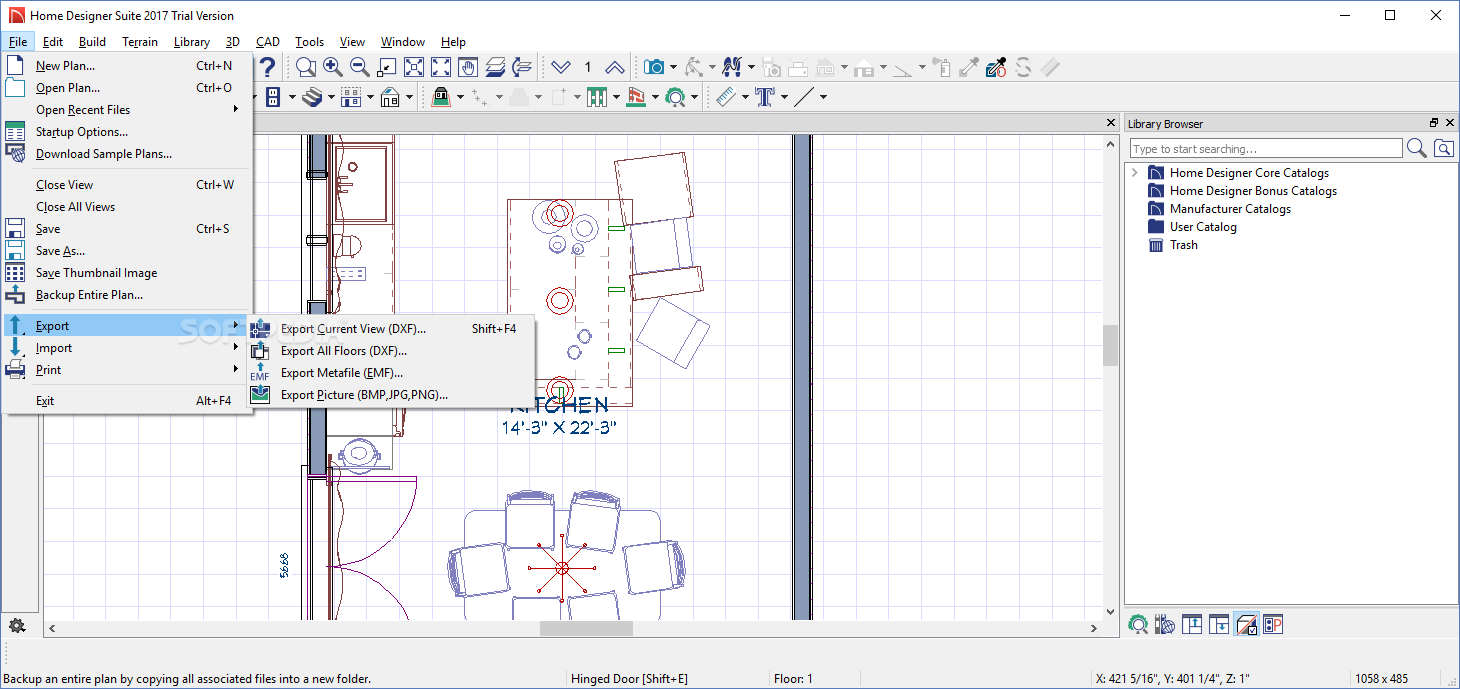

Now that the dormer walls are in place, a hole in the roof plane will be needed to allow the walls to come through in order to create the dormer.

#CHIEF ARCHITECT HOME DESIGNER SUITE 2016 MANUAL#
In this article, the manual method for creating a dormer will be used in a basic 40' x 30' rectangular structure, with a 10 in 12 pitch gable roof sitting low on the second story walls, as demonstrated in the Cross Section image below. There are several methods for creating dormers in Home Designer Pro, including using the Auto Dormer or Auto Floating Dormers tools, automatic roof generation, and manual roof tools. How do I create a manual dormer in Home Designer Pro? Specify where to Start the upper pitch - by specifying at what Height to transition from the lower to the upper pitch, or the measurement In From Baseline where the transition should occur.The information in this article applies to:.Check the Upper Pitch box, then specify an Upper Pitch value.On the Roof panel, specify the desired lower Pitch for the roof plane that will build over this wall or railing.As described in the steps above, use the Select Objects tool, click on the wall which has a higher, or lower, pitch than what you set in the Build Roof dialog, then click on the Open Object edit button.In some cases, such as in a gull wing or roof porch area, you may need to be able to set both an upper and a lower pitch for the roof Repeat this process for any other walls in your plan which need to have a pitch that varies from the default set in the Build Roof dialog.On the Roof panel, specify the desired Pitch for the roof plane that will build over this wall.įor the purposes of this example, we will set the pitch to 6" in an Imperial plan, or 26.5 ° in a Metric plan.

Using the Select Objects tool, click on the wall which has a higher, or lower pitch than what you set in the Build Roof dialog, then click on the Open Object edit button.Once you've set your overall pitch for the roof planes, you're ready to go around on a wall-by-wall basis and change the necessary walls that you don't want to follow the default setting. On the Roof panel, set the overall Pitch (in 12) for your plan that most of your roof planes need to be.įor the purposes of our example, we will set this pitch to 12" for an Imperial plan, or 45° in a Metric plan.Within your plan, select Build> Roof> Build Roof.Most of the pitches for your roof are likely the same though, with only a few being different, so this is the pitch you'll want to use in the Build Roof dialog. The pitch for each individual wall in your plan can be specified on the Roof panel within the Wall Specification dialog.

How do I tell the program to build a higher, or lower, pitched roof over part of my design? When I set the pitch for the roof in the Build Roof dialog, it only lets me set one pitch. The information in this article applies to:


 0 kommentar(er)
0 kommentar(er)
